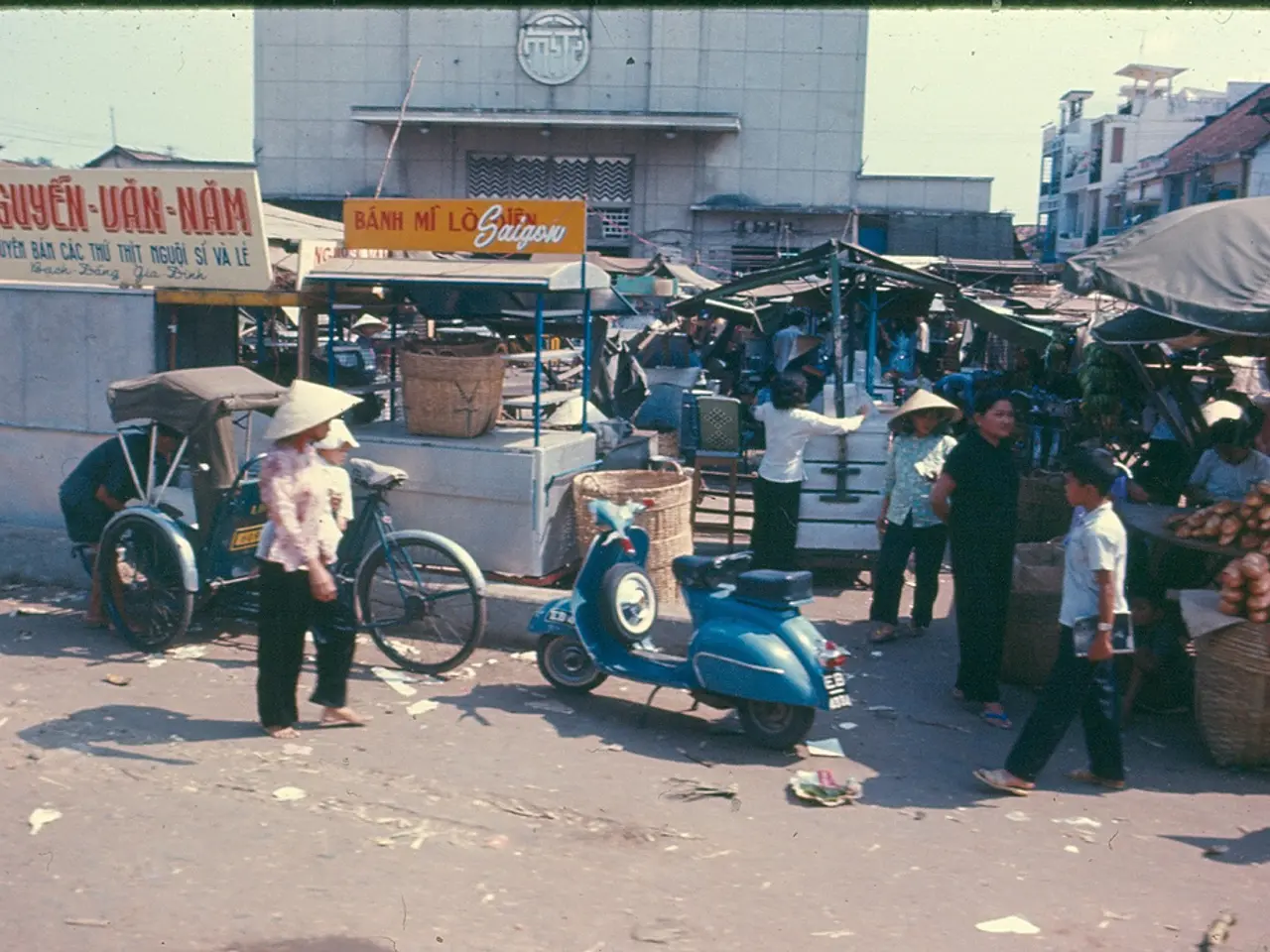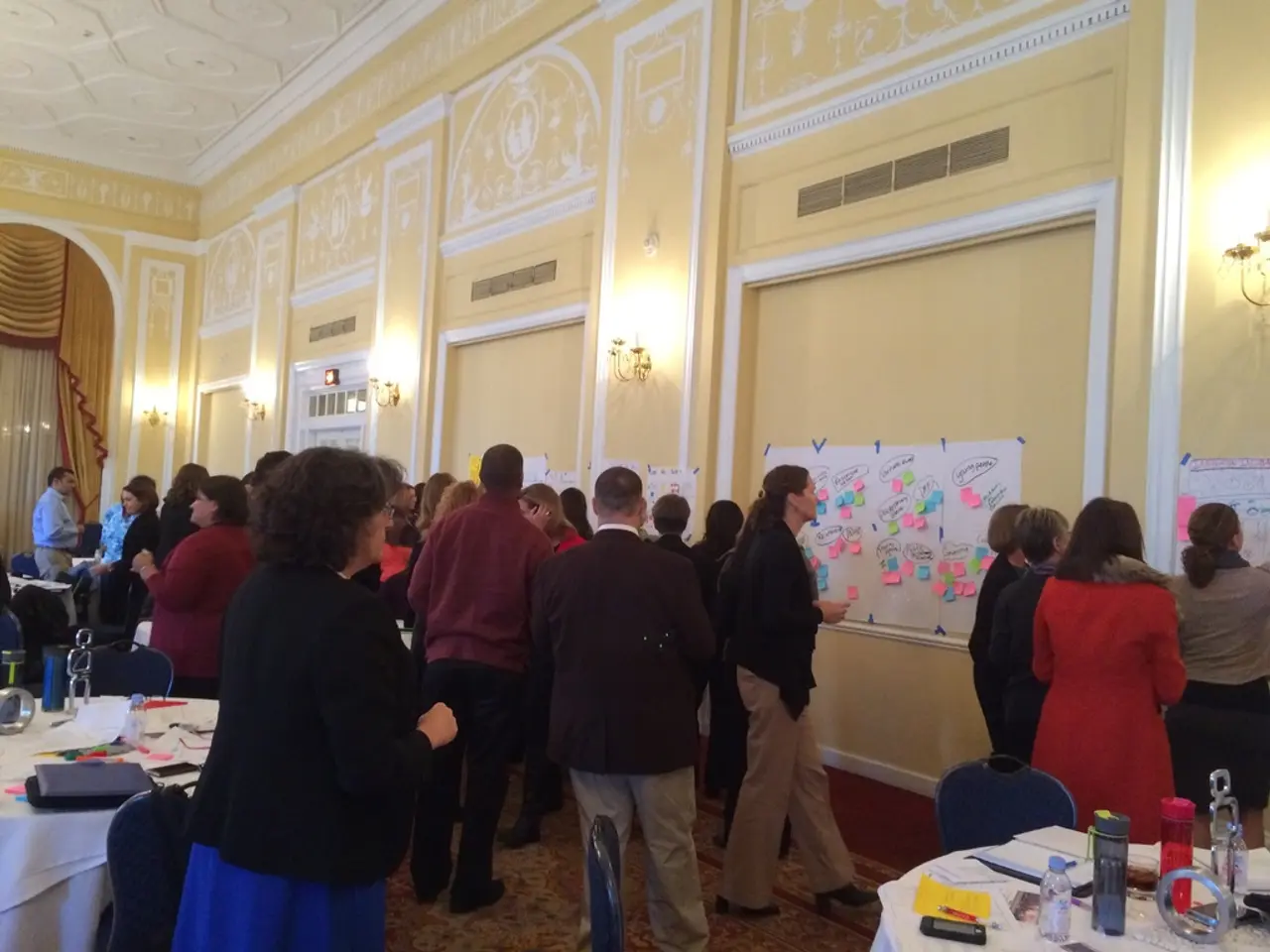Transforming mining waste into infrastructure such as bridges and buildings through circular economy practices
In the ever-evolving landscape of construction, South Africa is making strides towards a greener future by exploring innovative ways to utilise mine tailings as a sustainable alternative to virgin aggregates. This approach offers immeasurable benefits for the environment and the prosperity of future generations.
By employing mine tailings in construction, South Africa can significantly mitigate environmental impact. This is achieved by promoting the reuse of mine waste, reducing the extraction of virgin materials, and preserving natural landscapes. In doing so, carbon emissions are lowered, contributing to a greener planet.
One key method of this mitigation is the use of mine tailings as substitute aggregates. Instead of extracting new sand and gravel, construction can now leverage tailings from mining operations. This reduces the need to disturb hillsides and ecosystems, conserves biodiversity, and cuts fuel consumption by lowering diesel use during material transport and extraction.
Moreover, this practice aligns with circular economy principles, minimising resource depletion and environmental degradation often caused by traditional aggregate mining. It also supports a circular economy, where waste is seen as a resource, and resources are kept in use for as long as possible.
Traditional sand mining, such as along South Africa’s Umdloti River, has been shown to cause significant biodiversity loss and ecological disruption. By replacing virgin aggregate with recycled mining products, this damage can be minimised.
Furthermore, mining and processing virgin earth materials are energy-intensive and contribute to greenhouse gas emissions. Sustainable aggregate sourcing, including recycled materials, contributes to lowering the carbon emissions associated with construction.
Establishing the relationships, protocols, regulations, supply chains, and other structures necessary to use mine tailings in construction may be challenging. However, the potential results - a greener planet, preserved ecosystems, and a more sustainable use of resources - could be worth the effort for future generations.
Mine tailings sand is also suitable for 3D-printed concrete mixes, beneficial for quickly developing automated building systems. Additionally, fewer truckloads of tailings tipped onto a dump mean slower waste dam expansion, lower risk of structural failure, and less toxic dust drifting across to neighbouring settlements.
Utilising mine tailings for construction materials can supplement traditional quarrying, reducing environmental damage. In fact, every tonne of tailings used in construction leaves another hillside intact, saving thousands of litres of diesel.
Moreover, reducing the use of mine tailings in construction can lead to the reforming, top-soiling, and re-seeding of vast tracts of land, potentially restoring habitats over decades instead of centuries.
In sum, applying mining aggregate innovations in South Africa’s construction sector can safeguard ecosystems, reduce environmental degradation from aggregate extraction, and promote sustainable resource use. This approach addresses challenges seen in local river ecosystems and broader mining regions by substituting virgin materials with recycled waste while decreasing fossil fuel consumption.
- By reusing mine tailings as an alternative to virgin aggregates in construction, South Africa can minimize the negative impact on the environment.
- The use of mine tailings in construction contributes to a greener planet by lowering carbon emissions associated with traditional aggregate mining.
- This practice supports a circular economy, where waste is considered a resource, and resources are kept in use for as long as possible.
- Replacing virgin aggregate with recycled mining products in construction can help minimize the damage caused by biodiversity loss and ecological disruption in areas like South Africa’s Umdloti River.
- Utilizing mine tailings for construction materials can supplement traditional quarrying, thereby reducing environmental damage.
- Applying mining aggregate innovations in South Africa’s construction sector can promote sustainable resource use while addressing challenges seen in local river ecosystems and broader mining regions.




